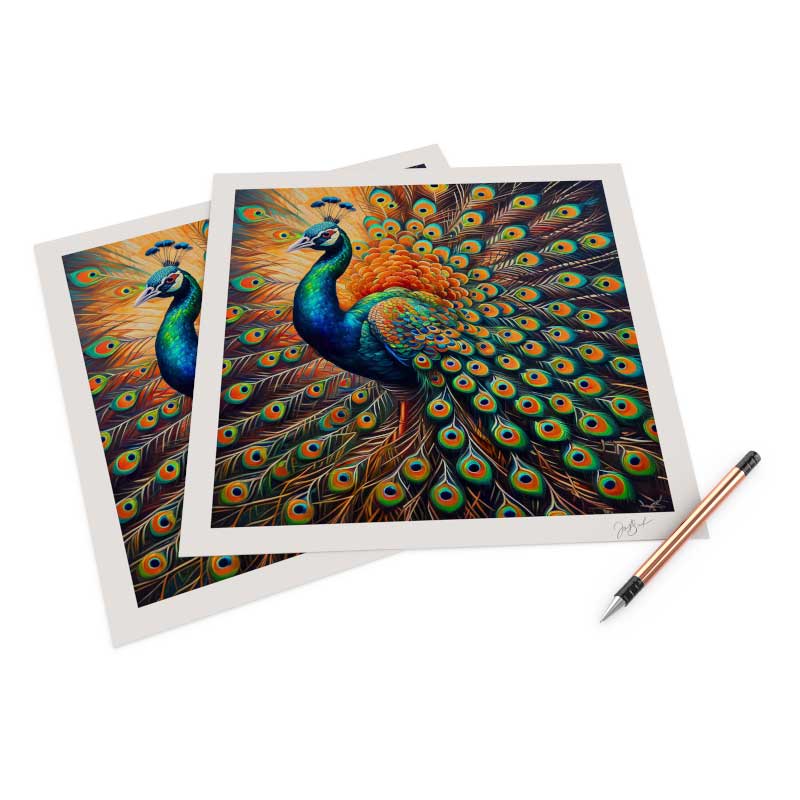Designing your own wallpaper, whether for personal use or if it’s to be sold as a commercial product, involves a combination of artistic vision, technical considerations, and some practical knowledge. FinerWorks has been quietly delving into this for a short while now, so i would like to share with you some of the knowledge needed associated with coming up with this design.
Conceptualization and Style
Define your aesthetic. Think about the mood and style you want to evoke. Are you aiming for a classic, traditional look, a modern geometric feel, a whimsical and illustrative vibe, or something else entirely? Your design should be cohesive with the overall decor of the room.
Consider the scale of the design. The scale of your pattern is crucial. A large-scale, bold pattern can make a statement in a large room, but might feel overwhelming in a small space. Conversely, a delicate, small-scale pattern can add subtle texture and interest without dominating the room.
Choose a color palette that works well together and complements the room’s furniture, textiles, and lighting. Consider how different colors will affect the perception of the space. Light colors tend to make a room feel larger and more open, while dark colors can create a cozy and dramatic atmosphere.
Determine how it tiles or repeats. Most wallpaper designs are based on a repeating pattern. The design must be seamless, meaning the edges of the “tile” or motif must align perfectly with each other. This is one of the most critical technical aspects of wallpaper design.
Technical and Practical Considerations
FinerWorks will soon be accepting certain vector formats, making resolution issues a non-issue. Once we do, I strongly recommend designing your patterns in a vector format. Until then, make sure you are using a suitable resolution. For any digital design, you need to work at a high resolution from the start. I know a standard recommendation is 300 pixels per inch (sometimes called DPI) at the final print size, but this may or may not be possible depending on your computer. The good news if you are only able to get it to about 200 pixels per inch, then that too will suffice. The difference between the two will hardly be noticeable at all. This ensures the design is crisp and clear, without appearing pixelated when printed, especially for detailed patterns.
There are different pattern types you can consider. These include the simple repeating pattern in which a simple square or rectangular tile repeats horizontally and vertically.
There is also the half-drop repeat in which the pattern on the second row is dropped down by half the height of the tile, creating a more staggered and visually interesting layout.
And of course, you can also go with a random/non-repeating pattern, which takes you more into wall mural territory. While less common, murals and large-scale designs can be single images that cover a whole wall without a visible repeat.
Right now, we have a canvas texture and a smooth matte. We will be adding more options here in the future. But note that the type of wallpaper material can significantly affect the final look. Smooth, matte paper will show a design differently than a textured, embossed, or metallic-finish paper.
Think about how easy the wallpaper will be to install. A design with a clear repeat is often easier to hang than one with an irregular or complex pattern that requires precise alignment.
Practical Design Workflow
At FinerWorks we have a wallpaper designer on staff. He recommends starting with a sketch. Even in the digital age, a pencil and paper can be a great way to explore ideas and compositions before you begin working on the computer.
He then uses a graphic design software like Adobe Illustrator or Photoshop. Illustrator is excellent for vector-based designs (geometrics, illustrations), which can be scaled infinitely without losing quality. Our designer will use Photoshop for photo-based or more textural designs.
Create the seamless tile. This is the most challenging part of wallpaper design. In Photoshop, you can use the Offset filter and the Clone Stamp tool to make the edges of your design tile perfectly. In Illustrator, you can use the Pattern feature to create a seamless swatch. There are some great tutorials on YouTube if you do a simple search on this topic specifically.
Finally, test before finalizing your design. This means creating a large preview of your pattern, repeating several times to check for any unintentional lines, shapes, or “ghosting” that might appear where the tiles meet. You want the repeat to be as invisible as possible.
By combining creative flair with a solid understanding of these technical requirements, you can design a beautiful and professional-quality wallpaper that will transform the space you want.
Giclee Printing at FinerWorks
One of the largest ranges of paper selections, while using the highest level of archival print technology allowing superior detail and color, you can create custom giclee prints of your artwork and photos.

